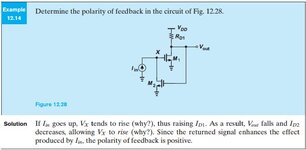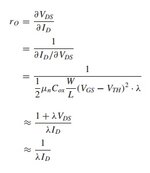Mustaine
Member level 1
Hello friends
In the example on the fundamentals of microelectronics by razavi, there is a examples that i do not understand,
the example says if Iin increases Vx tends to rise but why is that? it is mosfet there is no gate resistance.
Also example says when Id2 falls it allows the Vx to rise i dont get it also
can you help me about that.
thanks in advance
In the example on the fundamentals of microelectronics by razavi, there is a examples that i do not understand,
the example says if Iin increases Vx tends to rise but why is that? it is mosfet there is no gate resistance.
Also example says when Id2 falls it allows the Vx to rise i dont get it also
can you help me about that.
thanks in advance

